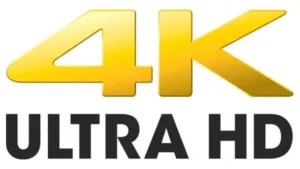While streaming media may be seen as a format for mobile devices, it does include all forms of streamed video including streaming UHD content to TVs and is, in fact, the only way the consumer can get UHD content in most countries today. At Streaming Media East, one of the topics was the appearance of 4k/UHD and what that means for the world of streaming media.
In one podium discussion the panel took a look at the definitions of 4k/UHD from a technical as well as consumer perspective. Of course they got the definitions right and differentiated between UHD and 4k accordingly. However, they made clear that CEA refers to the whole infrastructure as 4k/UHD and leaves it up to the consumer and manufacturer to make sure to use the proper term when referring to a specific product.
Fox Networks explained that there is already a UHD cable channel available in South Korea. The channel runs at a bandwidth of over 30 MBps, showing that this is technically feasible even though it may not be financially. The company does, however, expect that by 2020 UHD streaming will be possible with hardware-based compression.
According to its testing, the required bandwidth for acceptable video content depends very much on the content itself. About 40 percent of the content tested required a bandwidth of about 30 megabits per second, while another 40% looked acceptable at 15 megabits per second. There is also content that will require over 50 megabits per second to look acceptable. This testing was based on audience viewing.
The development of extended color space (rec.2020) and high dynamic range (HDR) will widen the gap between improved image quality and available bandwidth.
The panel voiced their view that higher frame rates combined with extended color space and HDR in FHD resolution may offer a better value to the consumer than UHD. However, they also see that the marketing efforts of the manufacturers pushing UHD in the consumer market is creating a market pull from the consumer, even with very little UHD content available.
Jan Ozer from Doceo Publishing gave an overview of the UHD codec world. He sees two codecs (HEVC and VP9) battling for the UHD streaming world. There are, however, several announcements from other companies about UHD codec development. He mentioned DAALA, RMHD from RealNetworks and Perseus from V-Nova. While they all have claimed success in developing UHD codecs, little is known about the real state of affairs.
The two main players in this space are VP9 and HEVC. Comparing them. the two are faring pretty well in technical results (with a slight advantage for VP9), but with a clear advantage for HEVC in ‘real world’ applications. The results are based on encoding three video files in three different resolutions and analyzing with a computer based tool.
There is a difference in required resources for encoding video content. Ozer said that HEVC requires roughly double the resources compared to VP9. Google claims that it has streamed 25 billion hours of video encoded in VP9, mainly on YouTube content, of course. With a claimed data rate reduction of 35% using VP9 this would make a lot of economic sense. Looking at desktop browser playback, PV9 is currently available on 59% of browser installations, while HEVC is not available at the moment. This is likely to change with the support of Apple and other players who are not likely to support any Google product.
Current UHD codecs do not support HDR and will release new codecs. Ozer did state that VP9 may be capable of including HDR content, even if he has never seen it being implemented. – NH
Analyst Comment
I’m not quite sure what Ozer meant by codecs not supporting HDR. The HEVC Main 10 profile supports 10 bit video and there are other higher bit rate profiles. He may mean that there is no defined support within the stream for specific HDR schemes, such as Dolby Vision. (BR)

